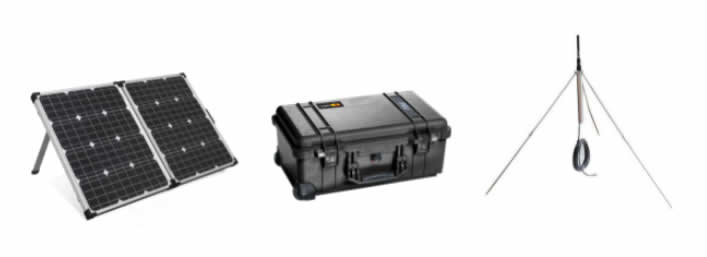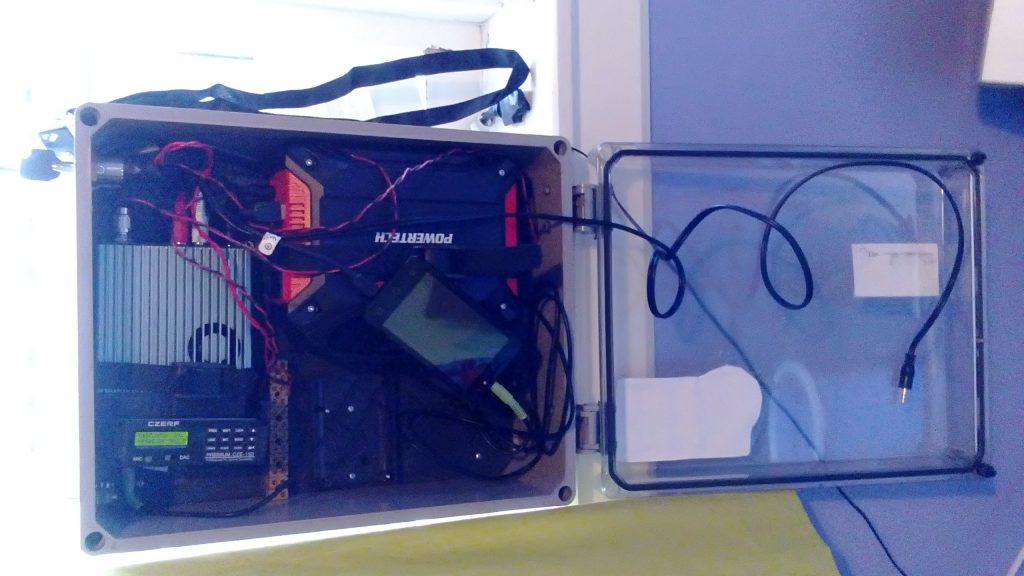Covid-19 Update
This project has pivoted somewhat in response to the current pandemic. A pandemic was one scenario that was included in the design but has now moved from a possibility to a reality. The result is I am now focusing on getting a streaming community station working and getting community buy-in, while the next prototype is stalled owing to hardware delivery issues. The current ‘station’ is streaming here.

Background
I have responsibility for an emergency radio network which connects the Eastbourne bays and is run by volunteers. The main radio base is above the library (you may have noticed the radio masts). During the Kaikoura earthquake it was obvious to me that there was no good way to inform the local community about what was happening and what they should do (i.e. whether Eastbourne should evacuate because of a possible tsunami, where the appropriate evacuation locations are, who to contact locally if support was needed, and when it was safe to return home. People made their own decisions based on various sources and there was a lot of confusion. Research showed that most people would resort to their radio for information if all else failed.
I decided a low powered local radio station, battery/solar powered, could be used to provide this local information in an emergency. It would continue to operate even if the power was cut and the internet and mobile networks were down or overloaded. Most people have access to a radio or could have one available for little cost. Using digital technology the station could be largely automatic and remotely controlled (no local connection or facility required).
The remote control could be done via any one of a number of (redundant) channels: Direct control panel*, SMS messaging*, email, GPRS*, Internet*, WiFi, Bluetooth, satellite*, VHF. (* already tested).
This station could be used by local groups and schools during normal conditions to provide community information – this would socialise it so people would be familiar with it, and would be advertised with fridge magnets etc.
The station could also be available as an online streaming site, which would build a bigger audience and more engagement. The audience would be aware that the station is also available as an FM broadcast, so if the internet is not available they could still access it by radio.
In an emergency the station would be remotely switched to transmitting appropriate messages for the emergency type by one of the people responsible. These messages would be programmed ahead of time so there would be no setup time. The messages would contain useful information for the type of emergency, such as appropriate actions, appropriate evacuation points, sources of information, numbers to ring etc.
As the emergency progresses the people responsible could update the information to include new information relevant to the eastern bays.
I took this idea to a workshop on Humanitarian Assistance and Disaster Recovery, and formed a team. We received a very positive feedback on the idea from several organisations including the Red Cross who see the system as having great potential for remote Pacific communities, as a way to warn them of potential disasters such as storms and tsunamis. It could also be used as a community resource during normal times.
We are now working with Red Cross to develop and test the technology with this in mind. The relevance to Eastbourne remains, and offers an opportunity to test and refine the system before taking it off to some remote island.

We have one working prototype which has helped to formulate new options and identify features and issues. We are now beginning a second prototype.
I would be very happy to discuss this and answer any questions you may have.
We are very excited by this. What started out as a community support idea has become a potential international humanitarian response tool which could help transform isolated communities everywhere.
